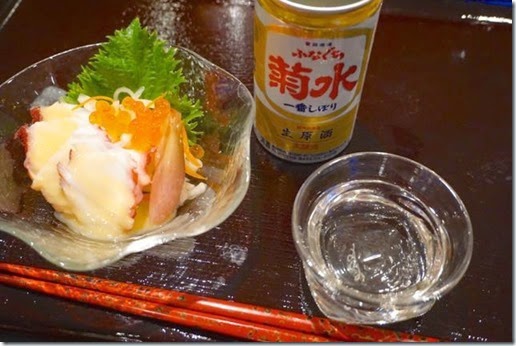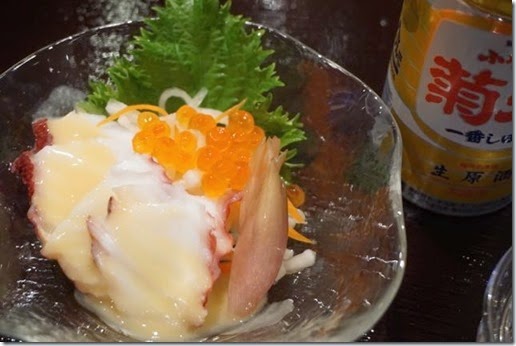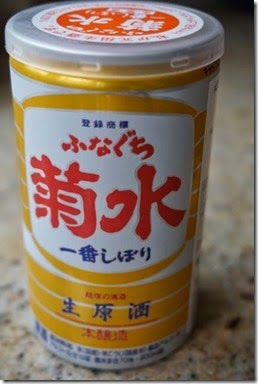There is a class of sake called "Cup-sake" which comes in either a glass or aluminum "cup" (about 1 go size 一合 or 180-200ml) with a pull top. These are widely available in convenience stores and vending machines in Japan. This type of sake is usually not high quality but it is easy to get and you can consume it anytime anywhere which appeals to certain clientele. Ozeki 大関 sake brewery is credited for inventing this type of sake (called "One cup Ozeki" ワンカップ大関) in 1964. More recently, better quality sake, even daiginjou 大吟醸 class is being sold in this format but when I lived in Japan, "cup sake" had some negative stigma attached to the extent that even in my youth I did not partake.
Interestingly, when we went to Sakamai 酒舞 in New York some years ago, one of the "genshu" 原酒 tasting included this "Funaguchi Kikusui" ふなぐち菊水生原酒. We did not think it was a particularly great sake but not bad either. We were a bit surprised that this came in an aluminum cup and was included in the "genshu" tasting at this “fancy” sake bar. Later, I learned that Kikusui sake brewery 菊水酒造 was in Niigata 新潟 and there were four different kinds of cup sake including "ginjo" class but this particular one is "hon jouzou" 本醸造 made of rice polished to 70%. "Nama genshu" 生原酒 implies non-pasteurized and non-diluted sake but I am not sure if it was pasteurized after placing it in the can.
In any case, when we had this at Yuzu restaurant the other evening. Few days later, I happened to spot this sake-in-a-can at the Japanese grocery store. I had to buy it to taste it. I served this cold.

It is always important to me that we taste sake with the appropriate food. I served daikon namasu 大根なます garnished with ikura いくら salmon roe, boiled octopus leg with karashi sumiso 芥子酢味噌and my pickled myouga 茗荷の酢漬.

The taste of the sake was totally different from what we had at Yuzu. It has some yeasty flavor of honjouzou but had a nice "umami" flavor and not extremely dry. Although this is not one of our favorites, it is certainly a drinkable sake.


No comments:
Post a Comment